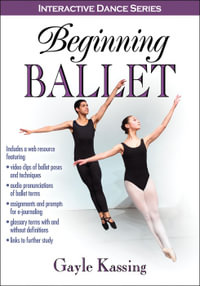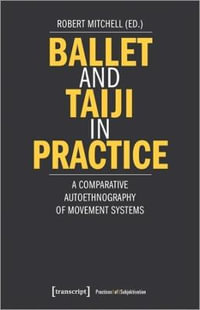Often called the Picasso, Stravinsky, or Frank Lloyd Wright of the dance world, Martha Graham revolutionized ballet stages across the globe. Using newly discovered archival sources, award-winning choreographer and dance historian Mark Franko reframes Graham's most famous creations, those from the World War II era, by restoring their rich historical and personal context. Graham matured as an artist during the global crisis of fascism, the conflict of World War II, and the post-war period that ushered in the Cold War. Franko focuses on four of her most powerful works, American Document (1938), Appalachian Spring (1944), Night Journey (1948), and Voyage (1953), tracing their connections to Graham's intense feelings of anti-fascism and her fascination with psychoanalysis. Moreover, Franko explores Graham's intense personal and professional bond with dancer and choreographer Erick Hawkins. The author traces the impact of their constantly changing feelings about each other and about
their work, and how Graham wove together strands of love, passion, politics, and myth to create a unique and iconically American school of choreography and dance.
Industry Reviews
"An experienced writer and scholar, Franko chose to study Graham with a different purpose, expressed in the title: to examine major examples of her works in the context of political and personal events. Covering a time from the rising fascism of the late 1930s to the postwar period of the early 1950s, Franko's research come at a time when many witnesses to her career have either passed away or proved to be less reliable about facts." --Dance Chronicle
"Franko presents a bold and rich narrative about neglected and unknown aspects of Martha Graham's work during the wartime decades. He sets a new standard for a close reading of psychoanalysis and fascism in relation to dance modernism, allowing readers to discover the Graham inside the Graham we thought we knew."--Janice Ross, Professor, Drama Department, Stanford University
"Franko considers Graham's work from multiple perspectives, including politics, literature, psychoanalytical theory and, not least, her relationship to her own popular image. In his bold, incisive analyses, Franko dispels many of the myths surrounding Graham to reveal, in their place, a brilliant, conflicted, more human artist."--Gay Morris, author of A Game for Dancers: Performing Modernism in the Postwar Years
"This book places Graham's mature work from the period 1938-53 in its social and cultural context through close readings of archival material, some of which has only recently emerged. It offers important new clarifications and insights about Graham's development at a time when, on the one hand, she was emerging as a major public figure while, on the other, she was turning to psychoanalytic ideas about myths in order to find a creative way to negotiate her
turbulent relationship with Erick Hawkins. Franko creates a much clearer historical account of this than existing work on Graham and points to previously unexamined aspects of her work with psycho-drama
that, in effect, anticipate later developments in dance theatre."--Ramsay Burt, De Montfort University
"Through the complex interweaving of Graham's work and life Franko creates a striking cultural study that combines analyses of politics, psychoanalysis, advertising, and manuscript materials. The book provides new insight into Graham's creative methods during a fundamental phase of her career."--Susan Jones, St. Hilda's College, Oxford
"Provocative and deeply researched." --The Washington Post
"[A] vital introduction to the aesthetic and intellectual explorations that guided Graham's best work . . . As Mr. Franko makes clear again and again in this absorbing book, nothing was simple about Martha Graham--the life or the work." --Wall Street Journal
"A bravura theoretical performance." --Chronicle of Higher Education
"For a deeply moving and informative view of Ms. Graham and her many achievements during those years, nothing can be more informative and fulfilling than this elegant volume." --Art Times
























